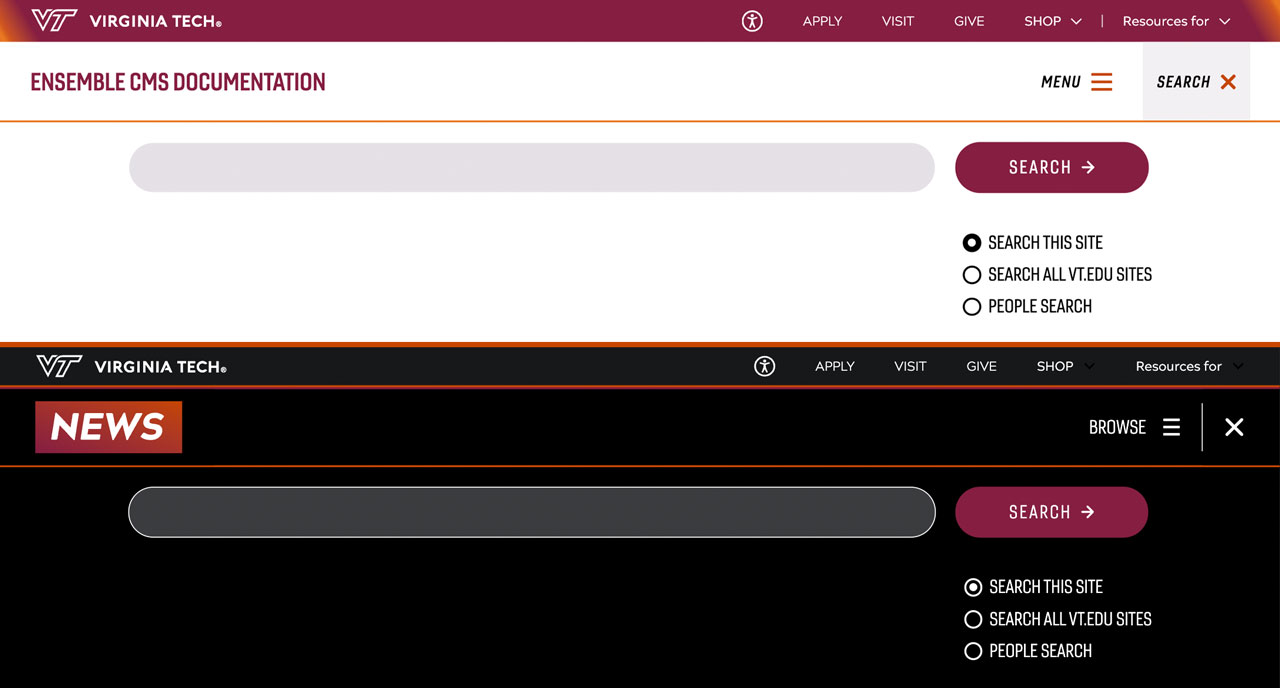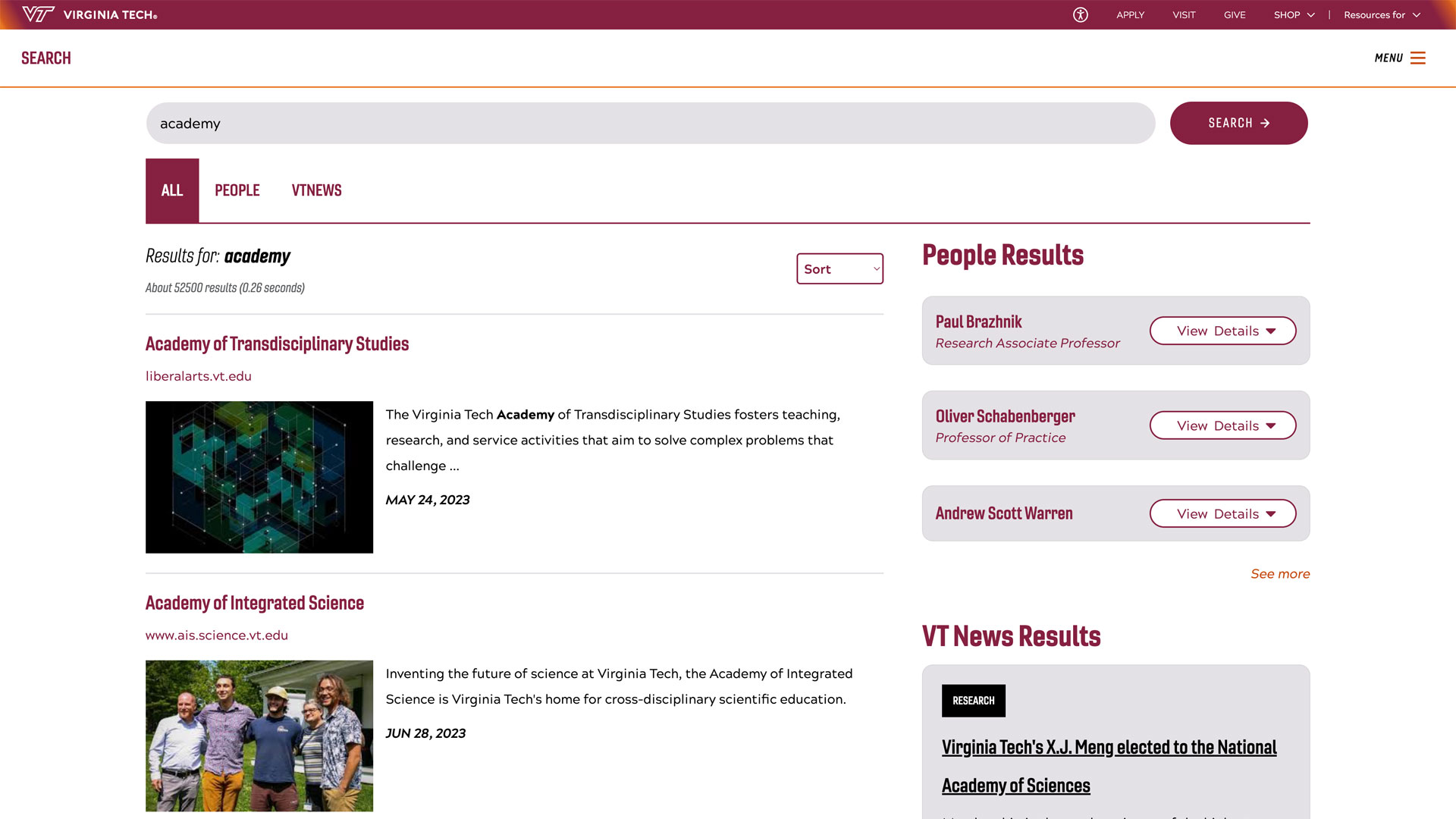Landscape architecture students design inclusive trails for Pocahontas State Park
A hands-on community charrette challenges students to create accessible experiences for all park visitors.

What happens when you arrive at a park with 90 miles of trails — and you can’t access a single one?
To ensure that nature enthusiasts of all ages and abilities won’t have to answer to that question, Virginia Tech landscape architecture students have envisioned a trail system design for Pocahontas State Park with accessibility and inclusivity at the forefront.
The project was this year’s focus for the annual Richard G. Gibbons Virginia Public Open Space Charette, an annual program-wide community engagement design challenge for landscape architecture students from the College of Architecture, Arts, and Design.
As a life-long public practitioner and guardian of the public landscape, Richard G. Gibbons, a fellow of the American Society of Landscape Architects, has been an active champion of student and community-based engagement projects with landscape architecture students and faculty for over 30 years, establishing an endowment and student design award and continuing to promote improved planning and management of publicly accessible landscapes.
A charrette is a very short and intense design process from start to finish, and, every year, the landscape architecture program partners with a Virginia community to utilize a student charrette to develop design solutions for public open space.
This year, the Friends of Pocahontas State Park reached out to the program with the aspiration that students would offer creative improvements for the existing trail system that would include sensory design and accessibility to nature recreation for people with a wide range of physical and neurologic abilities.
To meet this goal, the nine teams of future landscape architects had five days to visit the park with community partners and park stakeholders, assess needs and solutions, develop goals for trail improvement, and create a final design for the master plan. The teams presented their concepts to the stakeholders on the final day of the charrette.

Five days to build teams and generate ideas
With only five days to complete the project, students quickly organized their teams and began brainstorming ideas for accessible nature park experiences, new sensory and environmental education opportunities, accessible elevated boardwalks, and Americans with Disabilities Act-compliant kayak launch pads.
Teams consisted of at least one student from each cohort of the baccalaureate and master’s programs. The varying levels of experience among team members offered an opportunity to learn from each other while building a sense of community.
“Landscape architecture projects, in practice, are team projects,” said Terry Clements, professor and chair of the landscape architecture program in the School of Design. “This project teaches students how to work with people who have different interests, design approaches, and abilities.”
This year’s Gibbons Charrette was the inaugural opportunity for first-year undergraduate students to participate in the program — and one of their first opportunities to work with a team on a real-world design project.
“I can remember when I was working with older students on my first charrette,” said Coleman Cook, a third-year landscape architecture student. “I was intimidated, but I was fortunate to have groupmates who showed me the ropes and made me feel confident in my designs. Now, I always ensure that the younger students feel comfortable and confident, as their insights are essential to the success of the project.”

Solving a real-word problem and making an impact
Not only did teams take advantage of the chance to foster community across the program, but they also worked together with the Friends of Pocahontas State Park to envision an inclusive space for users of the public park.
Students focused their attention on universal design: the concept that environments and products are designed to be usable by all people, to the greatest extent possible. “We want to make sure that we aren’t displacing or discouraging people through design,” Clements said.
Central themes of the proposed designs emphasized the necessity of expanding access to nature recreation so everyone feels included and invited. Some groups created sketches of interpretive wayside signs, as well as sensory stations, connecting users to their surroundings by utilizing senses such as sound or touch. Other teams included picnic tables designed for wheelchair users and trail switchbacks that followed natural topography.
“Working with clients who are passionate about developing a place for everyone is very eye-opening,” Cook said. “Not all spaces are made for everyone, so it is up to us as designers and problem solvers to leave our positive impact on the world.”
Continuing to advocate for accessible public spaces
The community-based design project connected students to a real community to encourage inclusivity and meet the challenges posed by open space design. It also enabled the Friends group to inspire more advocates for change.
The landscape architecture program has community engagement written into their curriculum, and it is embedded in many courses as a specific learning objective. Students practice how to talk to, listen to, and work with community members, potential clients, and advocates for public space.
“It is an immersive way to introduce new students to community engagement,” Clements said. “For students who are progressing through the program, it encourages them to continue to practice these skill sets.”
The Friends of Pocahontas State Park has now hired a landscape architecture firm to move through the next stage of development, and they plan use the opportunities and constraints that the students identified to establish their first priorities.
“This project demonstrates the meaningful role Virginia Tech landscape architecture and the School of Design play in helping make the university’s land grant mission more relevant than ever,” said School Director Matt Powers. “Using a participatory design process, our faculty and students worked with the Friends of Pocahontas State Park to ensure that everyone, including visitors with physical and neurologic challenges, can more fully enjoy the beautiful and restorative landscapes of Virginia.”
Written by Ashley Falat, a junior communications major




